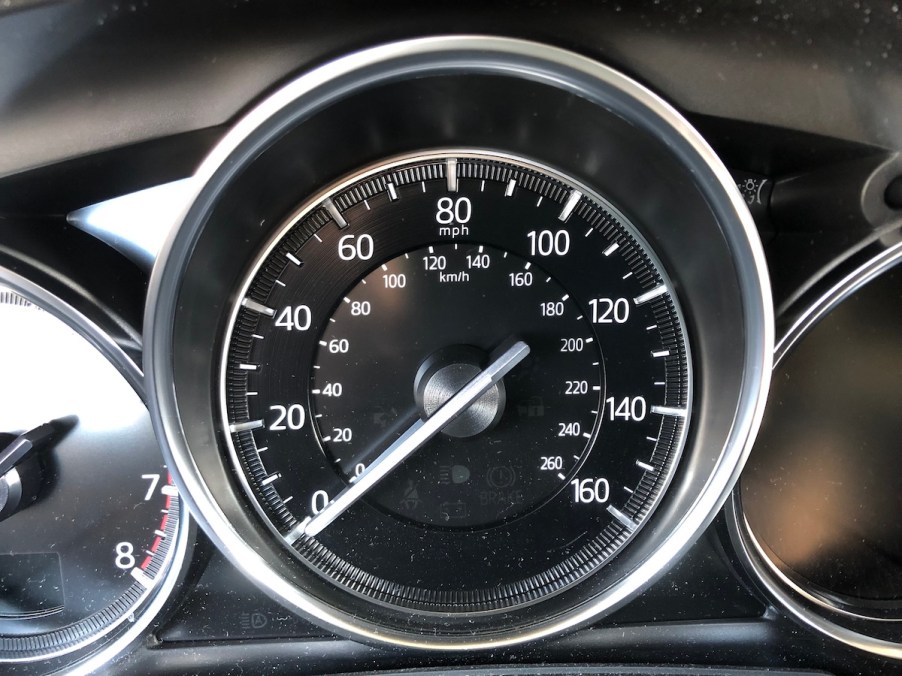
Why Do Speedometers Go to 160 MPH if You’re Not Allowed to Drive That Fast?
You’ve probably noticed most new cars’ speedometers read up to 160 mph. But American highway speed limits cap driving at 85 mph. So, why do automakers put that extra 75 mph on speedometers even if you’re not allowed to drive that fast?
Why do speedometers go so high when the speed limit doesn’t?

The reason is more visual than anything. Manufacturers lay out the numbers on speedometers a certain way because it looks more appealing and symmetrical. According to CNN, the easiest place to read a vehicle’s speed is at the top of the gauge.
American drivers go 45 to 70 mph on average, so it’s best to keep those measurements at or near the top of the instrument. But if the numbers didn’t go past the speed limit, it could confuse and even distract drivers.
Why are cars designed to travel at speeds well over the posted limit?
Even though analog speedometers show speeds up to 160 mph, it’s not just for show. Most vehicles can drive faster than the posted limits. Some can go faster than 160 mph, while others fall short of that.
There are a few different reasons. First, exceeding the speed limit will be necessary for specific situations. Daily driving doesn’t need more speed than what’s posted for the road you’re on, but if someone in your car had a medical emergency, it would be necessary to exceed that limit.
Police officers are usually fine with emergencies, but if they think your situation doesn’t warrant speeding, you could get a ticket. Basically, if you’re going over the limit because you’re late for an appointment, don’t expect sympathy from law enforcement.
Another reason for speed limits is they help the car’s performance. For example, driving slower puts much less strain on the motor than racing at top speed. Plus, traveling at lower speeds reduces fuel consumption.
What do race cars use to determine vehicle speed?
Sanctioned race cars are the only ones allowed to drive at top speeds on approved racetracks. When it comes to NASCAR racing, you might be surprised to learn that the cars aren’t allowed to have a speedometer on board. It’s a strict rule.
During the race, drivers don’t need to know their speed because their goal is to go as fast as possible. But the problem begins when their vehicles pull off the track and into the pit area. Believe it or not, there is a speed limit in this section. That’s because all the mechanics and other team members are running around, getting the car ready to re-enter the race. So speed limits are essential to keep the pits safe.
If a race car exceeds the speed limit in the pit area, officials will punish the driver. Racers who’ve performed well in a contest before a pit-speeding incident get moved farther back in the pack, which could cause them to lose the race. But without a speedometer, how can drivers know how fast they’re going? Teams have been begging race officials to allow a speedometer in the pits so this problem doesn’t continue.
Formula 1 is different from NASCAR. F1 doesn’t ban speedometers. Cars can track their overall speed, but most drivers don’t bother using it on the track. They’re more concerned about fuel levels and engine speed. But in the pits, team members keep tabs on speed to decide if the driver needs to make any changes in strategy.
Though drivers must abide by posted speed limits on public roads, driving vehicles that can go well past those speeds keeps the cars running smoothly. It also allows us to glance at our speed and get our eyes back on the road as fast as possible.


